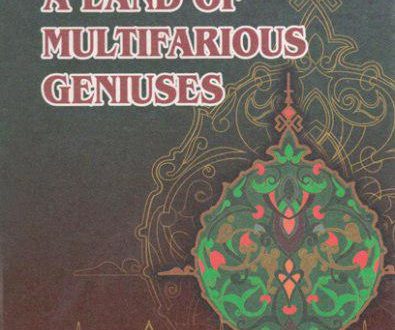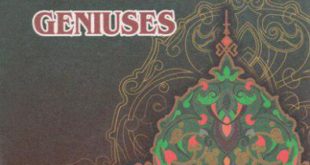In order to stress or draw the attention of the reader to the above-mentioned phrases or expressions, Burhan ad-din al-Marginoni, i.e. the author of the book “Hidaya”, used the phrase “Bima talavna…” (As has been uttered before…) for the above-mentioned ayahs, the phrase “Bima ravayna…” (As has been cited above…) for the above-cited Hadiths and the phrase “Bima zakama…” for the above-mentioned mental or logical proof. Sometimes, in order to check the correctness of the misunderstandings in the text of the ayah, the author uses the word “Nass” as a logical proof. He mostly writes the mental proof after oral evidences such as ayahs and Hadiths. As an answer to possible questions, the author usually uses the phrase “Fairi qiyla kazo qulna kazo” (If such a question arose, we would answer as follows…). In most of such cases, al-Marghinani provides the theory and the vision of the problem promoted by Abu Hanifa’s famous students Abu Yusuf and ash-Shaybani, and only after that he mentions the viewpoints of Abu Hanifa which might serve as an answer to both of the visions. Understanding his style of writing and the phrases chosen by him helps the readers to understand clearly and perfectly the main essence of his book “Hidaya”.
One of the peculiarities of “Hidaya” is in that it takes into consideration most facts and rules which are defined by another branch of science “Ilmu-l-khilaf” (A science about contradictions of views) because al-Marghinani was also a well-known scholar and an experienced expert in this field of science.
The first scholar to have founded the science of “Ilmu-l-khilaf” was Ubaydulla ad-Dabusi. While discussing and establishing the main principles of the Islamic law in his book “Hidaya”, Burhan ad-din al-Marghinani took into consideration not only the three main (Hanafian, Malikiya, Shafi’iya) orders of the Islamic religion but also such other orders as “zahiriya” and “avza’iya”, and expressed his own vision on the legal matters discussed in these religious trends. The author did not involve the positions of the Hanbaliya order because I he representatives and supporters of the Hanbaliya order had been considered to be not lawyers but specialists in the science of Hadiths lor many years by the above-mentioned orders. From this point of view, “Hidaya” may serve as a precious scientific source in the process of studying the features of “Ilmu-l-ikhtilaf”. At the same lime, it can be considered as one of the forms of the science “comparative law” which appeared comparatively later.
While discussing the legal affairs of Islam, al-Marghinani tried lo classify the legal acts as “mashru” (legal) and “nomashru” (illegal) acts and characterized them by mental proofs after oral proofs. From this point of view, “Hidaya” may serve as an incomparable source for the widely developed science “Philosophy of Law”.
Thus, the original book “Hidaya” written by Burhan ad-din al-Marghinani consists of four big volumes including more than 55 hooks and hundreds of chapters. It serves as a precious, perfect and the most important source covering all the fields of the Islamic law in the Hanafian order of the Sunnah branch of Islam with the only exception of the legal inheritance. The main reason of this reception is in the fact that the legal problems of heritage was discussed in the works of Imam A’zam Abu Hanifa and formed as an independent branch of science called “Al-Faraiz”.
The first volume of “Hidaya” was devoted to the problems of ablution before praying and practical acts of the prayers such as (inaying, fasting, zakaah and hajj).
The second volume of the book was devoted to the description “I the essence of the family law, the problems of having slaves at rs disposal, territorial punishments (coming from Allah), norms of international law, laws dealing with cooperation and collaboration of itnership, and the laws of waqf.
The third volume was a book dealing with the civil law, judgement and court, and the fourth volume covered the problems of agriculture and problems of land, criminal law, types of crimes and punishments, witnesses, etc.
The greatest book on the legal matters of the Islamic world “Hidaya” written by Imam Burhan ad-din al-Marghinani has been in use for the last eight centuries throughout the world as one of the most reliable and precious manual on the Islamic law, especially in the educational centres of Central Asian countries, in the Indian Peninsula, Turkey and in most of the Arabic countries.
“Hidaya” is included into the academic curriculum of most of the ancient and leading educational centres as “Al-Azhar” in Egypt, Islam University of Afghanistan, Aligarh University of India, “Devband” University, etc. as an important source in developing the system of law. In Afghanistan and in the educational institutions of the Indian Peninsula, a specialist who does not have good knowledge gained from “Hidaya” after the books of Kanz and al-Quduri is not acknowledged as an estimated specialist in law.
 Imom Buxoriy xalqaro ilmiy-tadqiqot markazi bukhari.uz
Imom Buxoriy xalqaro ilmiy-tadqiqot markazi bukhari.uz











